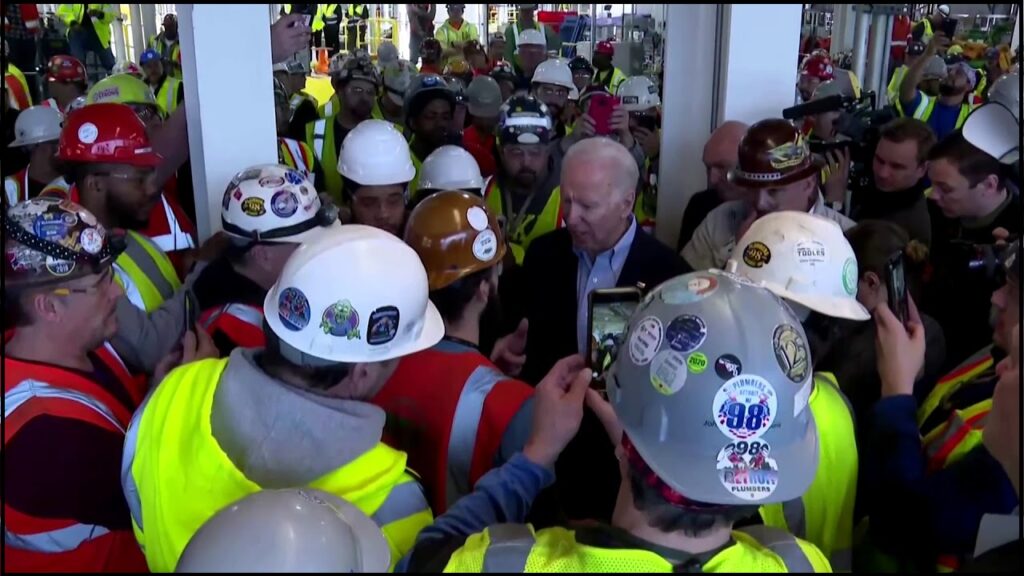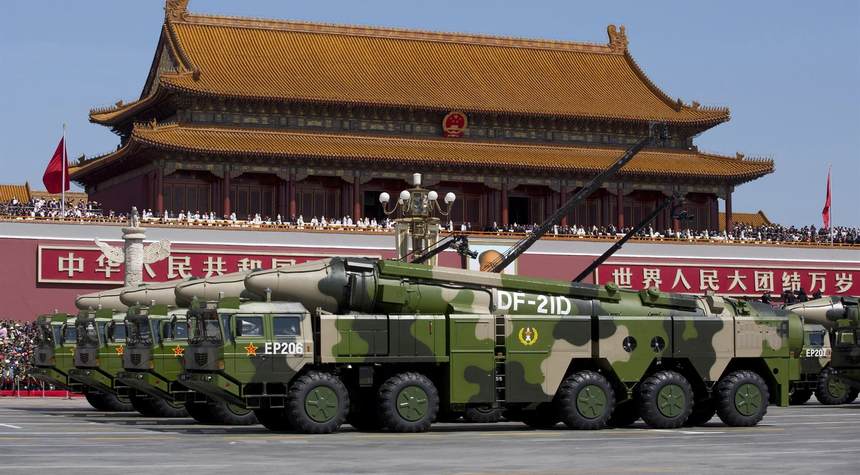America’s Founders understood political change is inevitable. They thought it must come about through constitutional mechanisms, with the consent of the governed, and must never infringe on the natural rights of citizens.
Progressives – rejecting the idea that any rights, including the right of consent to government, are natural – accept no such limits. Progressivism insists that the principled American constitutionalism of fixed natural rights and limited and dispersed powers must be overturned and replaced by an organic, evolutionary model of the Constitution.
To them, historical progress should be facilitated by experts dedicated to the expansion of the public sphere and political control – especially at the national level. As progressivism has grown into modern liberalism, the commitment to extra-constitutional “progress” is broadly shared across elite political, academic, legal, and religious circles. Politics is thus increasingly identified with a mix of activism, expertise, and the desire for “change.”
Unlimited Government for Social Progress
The progressive understanding of the American polity grew out of a transformation in American political thought that occurred in the late 19th and early 20th centuries. This transformation stemmed from a confluence of ideas borrowed from Darwinism, pragmatism, and German idealism. Each of these philosophical systems rejected natural law and natural rights. They privileged inexorable historical evolution and change over continuity and fixity.
In the early decades of the twentieth century, America’s intellectual classes, guided by these ideas, moved in lockstep. They scorned whatever they perceived to stand in the way of History’s march – especially the Founders’ Constitution and traditional Christianity. Government was understood to be unlimited in principle – and it certainly could not be limited by a dusty 18th-century Constitution based on the flawed theory of a fixed, and fallen, human nature.
The most important forms of social, economic, and political progress came to be seen as depending on the state, and the manipulation by the state of measurable phenomena. Human flourishing was most often seen as an incident of politically engineered growth and transformation. As the idea of a formal Constitution disappeared as an object of study – and eventually of public veneration – so, too, did the realm of the private and the invisible.
American Catholicism and Protestantism assimilated themselves to the progressive synthesis, in their calls for social solidarity through economic policy. Whether through the Catholic social thought of Fr. John Ryan (“A Living Wage,” 1906), or the social gospel of Walter Rauschenbusch (“Christianizing the Social Order,” 1913), significant portions of religious opinion turned against limited constitutionalism in the quest for more rational, just, and scientific state administration.
This stood in contrast to the pre-progressive American Christianity that buttressed the constitutional order by linking human fallenness, or imperfection, to the need for political moderation, individual rights, personal responsibility, and limited government. Such assimilation of secular thought and theology to the aims of progressivism continues to have important ramifications.
History of Progressivism, Written by Progressives
It would be next to impossible to understand the nature and depth of this progressive revolt against American institutions if one were to read the accounts of major American historians from the mid-twentieth century onward. As Winston Churchill is reputed to have said, “History will be kind to me, for I intend to write it.” In large measure, the scholarly interpreters of progressivism were in deep sympathy with its premises and conclusions.
For much of the twentieth century, progressivism was interpreted as a populist or occasionally intellectual movement that was ultimately assimilable to the basic contours and concerns of the American regime. This is largely because professional historians shared the assumptions of the progressivism they documented: the utility of statism, the chimerical status of natural rights in the face of Darwinian and pragmatic criticisms, and the anachronistic nature of a Constitution rooted in political thinking that could not be squared with “scientific” and “evolutionary” approaches to history.
The dominant professional organization of historians – the American Historical Association – was founded in the late 19th century, just as fashionable progressive ideas were sweeping the intellectual classes. American historians from the beginning downplayed any constitutional perspective because they saw it as quaintly irrelevant and professionally antediluvian.
With the growth of academic history in the 20th century, the discipline’s practitioners absorbed progressive orientations – deliberately or through subtle osmosis – from the very movement that many of them would chronicle. Collectively, therefore, they were guilty of a strange complicity of understatement.
Groundwork for a ‘Living Constitution’
In fairness, historians were not alone in this. Many other academic disciplines were similarly compromised. But it was historians who most thoroughly told the American story to generations of college-educated citizens.
Such matters are not merely of academic or antiquarian interest. The serious but flawed historical scholarship of the twentieth century laid the groundwork for far less serious – but more famous – progressive assaults on America, such as those contained in The 1619 Project.
More broadly, as “History” and “progress” came to replace nature as the fundamental ordering ideas of American politics, they laid the groundwork for the contemporary embrace of the “living Constitution” as a replacement for the Founders’ formal, fixed Constitution. The reverberations of this shift are still being felt on matters as diverse as the size and scope of government, freedom of conscience, identitarian politics, and the political and cultural drift of the nation.
Writing after the Progressive Era had morphed into the New Deal, leading progressive historians wrote with the considerable authority that twentieth-century American academia provided. Starting in the 1940s, they studied progressivism qua progressivism – which is to say, they identified it by name, casting longing glances in its direction.
These scholars cemented in the American mind the image of progressivism as a warm and fuzzy movement for change whose time had come and gone. The chroniclers more often than not ignored the fundamental constitutional dimensions of progressivism and the relationship of citizens to the state. And where they didn’t ignore such matters, their works trod lightly so as not to challenge an increasingly conventional wisdom.
For example, Arthur Schlesinger, Jr. (“The Vital Center,” 1949), gives an account of progressivism’s direct lineal descendant – the New Deal – which, he claims, fills “the vacuum of faith.” New Deal liberalism provides an intellectual and moral compass that allows Americans to work their way through the anxieties of the postwar era, when “unhappy people” see that both communism and capitalism have dehumanized workers and destroyed personal and political liberty.
Echoing the central themes of the progressives while seeming to dismiss their romanticism, Schlesinger observes matter-of-factly that the “problem remains of ordering society so that it will subdue the tendencies of industrial organization.” He laments threats to the “vital center” – the New Deal center – that must be defended against all enemies. The “positive state” – latent in the American tradition since Hamilton – must continue to flourish for the sake of democracy.
Glossing Over a Widening Divide
Likewise, Richard Hofstadter’s consensus view of American intellectual history (“The Age of Reform,” 1955) deemphasizes the depth of philosophic disagreement that separated the founders of progressivism from the founders of the American regime – and from what was then the mainstream of American political thought.
In Hofstadter’s telling, the desire for reform was more psychological than political, not rising from a will to promote ideas as much as a reflex to defend against economic and emotional insecurities. He sees progressivism as the quest of the essentially well-off classes to maintain status in an era of socioeconomic challenge.
America, he asserts, lacks a conservative intellectual tradition, so progressive thinking exists as a highbrow reaction to unserious political conservatism. The possibility of a genuine constitutional conservatism – stretching from the Founders to Lincoln and reasserting itself in the very period that is the subject of his book (through William Howard Taft and Calvin Coolidge, among others) – is beyond Hofstadter’s imagining.
Indeed, the continuities in the American tradition, rather than important disjunctions in thought, were emphasized by scholars across the spectrum, from Louis Hartz (“The Liberal Tradition in America,” 1955) to Henry Steele Commager (“The American Mind,” 1950), to Daniel Boorstin (“The Genius of American Politics,” 1953). In these accounts one finds a peculiar mix of understatement and triumphalism, something particularly noticeable in Commager, who claims that progressive calls for reform rested on moderation, common sense, and even inevitability, given the fundamentally changed political and economic landscape of the early twentieth century.
In other words, Commager’s historian’s interpretation coincides with the self-understanding of his subjects. The progressives’ searing constitutional critique attracts surprisingly little attention.
The Many Faces (and Disguises) of Progressivism
Arthur S. Link (“Woodrow Wilson and the Progressive Era,” 1954) argued for the relatively superficial character of progressive thought exemplified by Woodrow Wilson, in the course of which he accepts the historicist premises of progressivism, claiming that the progressive movement itself “was the natural consummation of historical processes long in the making.” The understanding of progressivism as fundamentally a populist rather than philosophic movement was reinforced by historians such as C. Vann Woodward (“Origins of the New South,” 1951). Henry F. May (“The End of American Innocence,” 1959) even suggested that many progressives represented a basic cultural and political conservatism, a theme that would be magnified in the next decade.
As the 1950s gave way to the 1960s, American history writing was increasingly defined by the concerns of New Left scholars, who interpreted progressivism primarily in economic terms. They rejected the psychological reductionism of consensus historians and made ideology and interest central concepts in their analysis. But their deep sympathy with the aspirations and philosophical orientations of progressivism ensured that they became part of the story they chronicled.
In “The Contours of American History” (1961), William Appleman Williams sees the progressives as Christian capitalists merely trying to harmonize private interests, rather than attempting to challenge the system as whole. Themes of economy and empire loom large in Williams’s account, and constitutional questions are all but invisible as he insists that a fundamental conservatism characterized progressive thought. Williams argues that the progressives sought to nationalize and Americanize – but he does not attempt to define “Americanization” other than in materialist terms.
Like Williams, Gabriel Kolko (“The Triumph of Conservatism,” 1963) tries to construct a grand narrative of American history along materialist lines. The Progressive Era was really an era of conservatism, serving the needs of particular classes – especially the business classes. “Political capitalism” is the term Kolko uses to describe the dominance of politics by business.
Denying Progressivism’s Existence
Competing scholarly accounts of the nature and significance of progressivism, among other matters, culminated in furious battles within the historical profession. The 1969 meeting of the American Historical Association was tumultuous, with conflict between the “radical caucus” and the “establishment” coming to a head. The radicals aimed their fire at the “consensus” historians, who were seen to dominate the field.
It was only a matter of time before someone would attempt to put conflicts over progressivism to bed once and for all – both for the historical profession and ultimately for the American people. And the way to do this was to claim that there was no “there” there to begin with. By the 1970s, the radicalism of the New Left was giving way to a perhaps even more radical postmodernism.
Cultural historian Peter Filene (“An Obituary for ‘The Progressive Movement‘,” 1970) denied that progressivism had ever existed. In fact, he saw significantly less to progressivism than even Hofstadter, who at least allowed for some measure of psychological unity among progressives, or “temperamental traits” that they shared.
Filene accepts the view that progressivism was aimed at undermining privilege and expanding both democracy and government power. But he claims that there was much more that divided the progressives than united them. For example: Teddy Roosevelt’s belief in big government to offset the power of big business, versus what he denigrated as the “rural toryism” of the more populist wings of the movement.
Additionally, progressives alternately emphasized either democracy or paternalism. Such splits point not to a cohesive movement, according to Filene, but to various incompatible visions of reform. “In each of its aspects – goals, values, membership and supporters – the movement displays a puzzling and irreducible incoherence.” There are only “shifting coalitions around different issues.” The idea of a progressive movement is but sound and fury, signifying nothing.
The Stealthy Threat of Progressive Ideology
By the end of the twentieth century, most scholarly accounts of progressivism downplayed its constitutional dimensions and its effect on larger cultural conceptions of the private sphere. For some, progressivism represented little more than the cautious efforts of popular – or at least non-elite – interests to check elite dominance. This was, broadly speaking, the view shared by early liberal historians like Hofstadter, Schlesinger, Jr., and many more.
For others, populism had little to do with progressivism. The New Left historians, such as Kolko and Williams, attempted to upend the liberal or consensus narrative by insisting that corporate elites either drove or coopted progressive reforms in order to exercise ideological and political control over an otherwise unruly economic order.
For most everyone, progressivism was bound up with the desire for efficiency and expertise rather than the messiness of republican politics – and with a faith in expanded state (especially national) power, as opposed to decentralized market forces or the spontaneous workings of civil society. Almost no one saw progressivism as a fundamental rejection of the Founders’ Constitution, embodying a new form of secular millenarianism rooted in a strong, relatively unified sense of historical unfolding – and pointing to deep theoretical unity, rather than division.
Today’s progressives, who occupy almost all the cultural high ground in America, were educated in institutions where the misrepresentations of historians still loom large. Despite these modern progressives’ positions of privilege and systemic advantage, a new constitutionalist critique of progressivism prevents them from claiming final victory. Only recently have scholars outside the historical profession – mostly a new generation of political theorists – identified progressivism for what it was and continues to be: a fundamental rupture with the roots of American order.







 This should not be unexpected for those who read here. Massive price inflation on essential goods is eating up wages. Food, fuel and energy price increases are changing consumer spending habits. Non-essential purchases have stopped….. they haven’t slowed,
This should not be unexpected for those who read here. Massive price inflation on essential goods is eating up wages. Food, fuel and energy price increases are changing consumer spending habits. Non-essential purchases have stopped….. they haven’t slowed,  I said in June, at a macro level home prices had reached their peak (last two weeks of May, first two weeks of June was apex). Obviously, there are some geographic home value increases still happening as COVID related regional issues and work opportunities are shifting populations. There is also a lag and ripple effect that takes time to work through the economy. The macro-apex will not be visible until next year.
I said in June, at a macro level home prices had reached their peak (last two weeks of May, first two weeks of June was apex). Obviously, there are some geographic home value increases still happening as COVID related regional issues and work opportunities are shifting populations. There is also a lag and ripple effect that takes time to work through the economy. The macro-apex will not be visible until next year.




